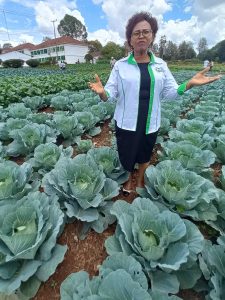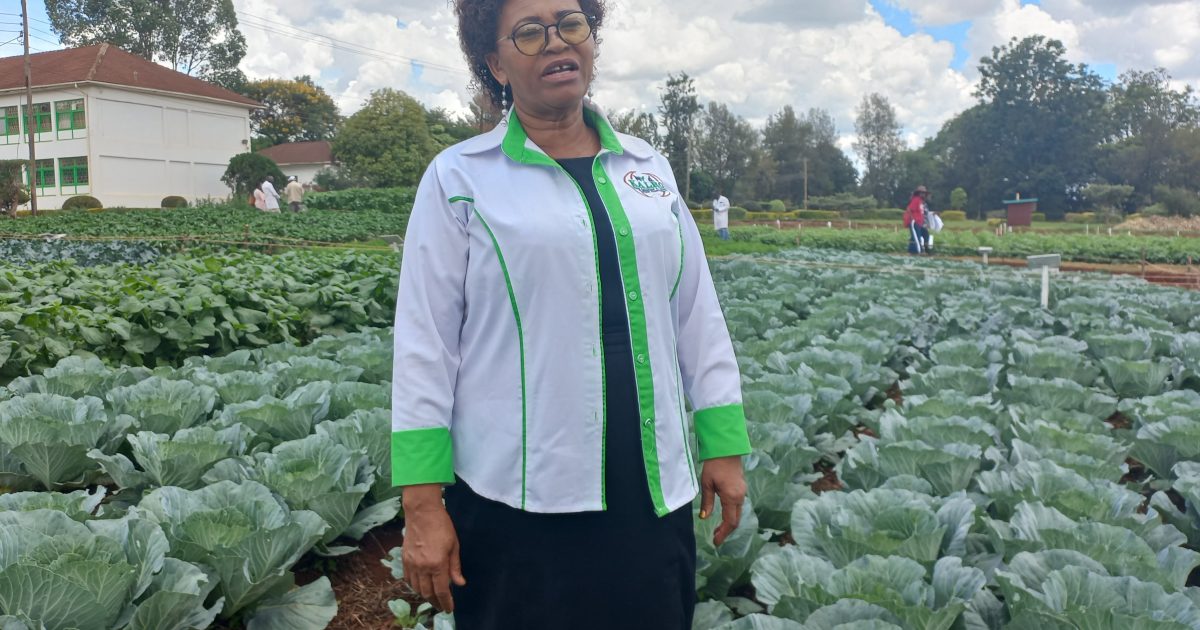Agriculture researchers have warned of drastic food reduction in coming years after preliminary sampling of the soil was found to be high on acidity levels.
The challenge is further compounded by lack of soil tests and low application of lime to replenish depleted nutrients in arable farmlands that have lost fertility due to continuous cropping and population pressure particularly in the medium and high rainfall areas of the country.
Soil acidity has rapidly become a serious impediment to the realization of high yields in areas with agricultural potentials because the farms lacked some essential plant nutrients critical for production.
The scientists from Kenya Agriculture Livestock and Research Organization (KALRO) expressed fears that acidity levels in medium and high rainfall regions currently stands at 63 per cent and this is denying farmers the ability to produce more food.
Speaking to KALRO- National Agriculture Research Laboratories (NARL) Kabete, during a farmer’s field day, Centre Director Dr. Esther Gikonyo, cautioned that the acidity level in soils was worrying and it is time drastic measures are taken by all stakeholders to improve on production that will result in food sufficiency.
” The situation has not been helped by application of fertilizers and farmers have little preference of lime to boost the nature and texture of their soils and identify it with the cash crops such as coffee and tea and this has continued to deny the country enough food, ” said Dr. Gikonyo.
“There is no awareness and farmers are ignorant of the benefits of lime. It is good for improving food production and besides human health” she said that in soils that are very acidic and lack micro nutrients, there is a very high relation between human health.
“The parameters in soil fertility is the PH levels which establishes the alkalinity and acidity readings to determine the availability of crop nutrients and considering that 70 percent of the high and medium areas supply food to the nation it’s a high time we check the acidity levels” she said.

Dr Gikonyo added the only remedy to acidity is applying lime which neutralizes and this enhances the nutrient levels, noting that with appropriate fertilizer recommendations based on the soil testing this will not only improve the crop production in four folds to address food security gaps in the country.
For the high medium rainfall areas where the PH levels are below the optimal soil levels for good crop production, liming is a cheap technology as it was cheaply available in the country as one bag will sell between Ksh 300 and Ksh 600”, she said .
Another benefit of liming, Dr. Gikonyo said is that when we lime our soils, the impurities in the fertilizer like the heavy metal absorption becomes less unlike where PH is low as is in our many soils, the uptake of heavy metal is high thus the likelihood of food being unhealthy as it will have heavy metal contamination.
On matters fertilizer, Dr. Gikonyo explained that when the PH of the soil is below 5.5, this indicates the possibility of aluminum toxicity which is detrimental to soil growth
She noted that fertilizer should be provided according to the requirement of soils in the different regions, noting that there is a need for soil fertility mapping done that will indicate the deficient plant nutrient in specific areas.
In a research done in 2014, she said that they established that there were many plant nutrients in our soil that are deficient in our soil constraining crop productivity and the mapping geographical location of soil sampling sites was not incorporated into the research and that was a weakness
“We are proposing, in future, that we need to have soil fertility maps established for different regions or counties so that the fertilizer that is specific in specific areas, based on nutritional requirement of the crop in the counties can be provided or availed by the government”, Dr. Gikonyo said.
The Centre Director also added her voice on the issue of DAP (diammonium phosphate) fertilizer and the NPK (nitrogen (N), phosphorus (P), and potassium (K) fertilizer that has brought a lot of debate in the country saying that research they conducted between 2016 and 2019 came out clearly to show that DAP gives the best yields.
“We worked in Uasin Gishu and three Counties in Central Kenya where soils are strongly acidic and the result indicated what the farmers have always believed and know that DAP is best fertilizer and also from our findings, the DAP still gives best yields compared to NPK”, Dr. Gikonyo added
She explained that DAP has the highest phosphate content which is inherently low in the soils and particularly so in the acidic soils and that when applied to the soils, it is converted to the insoluble form that cannot be taken up by the crop
“The best management of acidic soils would be the application of lime to neutralize the acidity and combining it with recommended fertilizer based on soil test then we will address the food production challenge”, Dr. Gikonyo said.
According to the researchers, there is a need to prioritize liming as a sustainable integrated soil fertility management technology within National Agricultural Research and Extension Systems.
By Wangari Ndirangu





